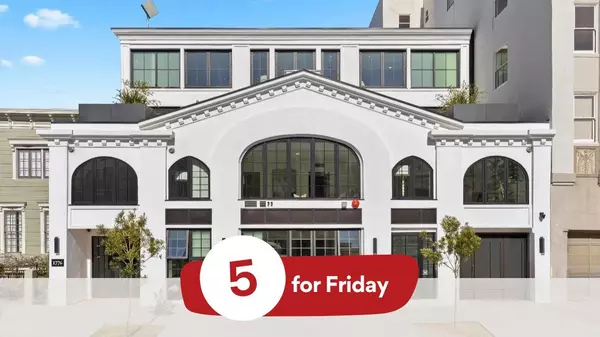Add an Addition or Build an ADU? Experts Weigh In on Resale Value
As more homeowners stay put longer, many are hitting a wall—literally.
One in 4 say they need more space, according to one survey, with another quarter reporting they outgrew their home just two years after moving in.
Yet, moving has never been harder. Over 80% of homeowners have a mortgage with an interest rate of less than 6%, according to research from Realtor.com®, leaving many reluctant to trade their low monthly payments for today’s higher costs.
Instead, homeowners are looking for ways to make their existing space work harder. Two of the most common solutions are building an addition or adding an accessory dwelling unit (ADU).
Both can deliver more square footage and functionality, but not all square footage is created equal.
“Both an ADU and an addition can increase your home’s value when it comes time to sell,” explains Omer Reiner, a real estate agent and president of Florida Cash Home Buyers. “How much value depends on what potential buyers are seeking.”
Addition vs. ADU: What’s the difference?
“The key difference between an addition and an ADU is that an ADU is a fully independent dwelling, with its own kitchen, and so can house a separate family,” says Breno Neri, co-founder of Contemporary Tiny Homes.
“Both add square footage, but only an ADU can serve as a separate dwelling and function as a multigenerational housing (in-law suites or granny pods), a guesthouse, or a rental unit,” he adds.
In other words, additions are an extension of the main house. It’s physically connected to the existing structure and typically adds bedrooms, living space, or an extra bath. Most additions don’t include a full kitchen—at best, you might see a kitchenette—so they aren’t designed for independent living.
An ADU, by contrast, is a fully self-contained dwelling. Depending on its purpose and design, it can include its own kitchen and bathroom, allowing it to function as a standalone home. That independence makes ADUs useful as rental units, multigenerational housing, or guest suites—uses that often appeal to buyers in ways a traditional addition cannot.
Why an addition still adds reliable resale value
The greatest appeal of an addition may be its simplicity. The square footage it adds is immediately absorbed into your home, which can be easier for buyers to understand, and more directly boosts the appraised value.
This is especially true if it fixes functional bottlenecks in your home, says Andres Chacon, founder of Vista Collection. Bed and bath additions or ones that create needed storage space will capture value most reliably.
Paul Dashevsky of MaxableSpace and GreatBuildz agrees. He gives the example of converting a two-bedroom home to a three-bedroom one. That additional bedroom could unlock a larger buyer pool with bigger budgets than the two-bedroom home would have given you, he says.
That’s why he recommends an addition for the best ROI.
“From my experience flipping and building homes, a home addition gets more in resale value than an ADU, assuming their size is roughly equal,” he says.
How ADUs can boost value with rental income
But ADUs have their advantages—namely offering a possible revenue stream. That second space can create rental income or be marketed to multigenerational households.
“Because of the price constraints [in Southern California] and high demand for rentals, most people are willing to pay much more for a property that has an ADU over an addition,” explains Jessica Vance, a real estate agent in San Diego.
Jeremy Nova, co-founder and creative director of StudioHome, says he’s seen detached ADUs appraising for as high as 1.5 times the cost to build in high-cost markets like these.
They also can help with aging in place, says Diana Melichar of Melichar Architects.
“Expanding housing options for multigenerational living is becoming more important as people are living longer and want to be near family,” she says. “ADUs offer flexible, affordable housing options and can help seniors stay near family, enjoying privacy plus proximity.”
Regional differences: Where additions win vs. where ADUs pay off
Which option delivers the best resale value often depends on where you live.
“In most Midwestern cities, including Des Moines, buyers prize bigger footprints instead of detached spaces since families are frequently in search of more usable interior space,” says Jacob Naig, a real estate agent and investor. In these markets, an extra bedroom, family room, or expanded kitchen may outshine a detached unit when it comes time to sell.
On the West Coast, the calculus looks different. Experts in California point to ADUs as a clear value booster, thanks to sky-high housing costs and strong rental demand.
Vance points to the fact that San Diego County issued more permits for ADUs (1,348) than for single-family homes (1,225) in 2023—a signal of just how quickly these secondary units have become mainstream.
Hidden costs that can shrink your ROI
Whether you choose an addition or an ADU, the price tag doesn’t stop at construction. Both options come with hidden costs that can erode your return on investment.
With additions, the biggest risk is over-improving compared with nearby homes.
“You can spend $80,000 to try to add square footage only to learn that buyers in your market refuse to pay a premium above a certain ceiling,” warns Naig. Opening up walls can also trigger unexpected code upgrades or even property tax reassessments, says Whitney Hill, co-founder of Snap ADU.
ADUs carry a different set of challenges. Permitting can drag on for months, and utility costs can balloon when separate meters or hookups are required.
“If you rent out an ADU, you will want separate utilities covering the unit so that you aren’t responsible for someone else’s usage,” cautions Reiner.
In both cases, the danger lies in spending more than the neighborhood will support. The wrong project can make your home harder—not easier—to sell.
So, which adds more resale value?
Like most things in real estate, whether an ADU or addition adds more resale value will depend on the market and the buyer.
Additions add more square footage and may appeal to bigger families, while ADUs build in more flexibility that can appeal to multigenerational living or families looking for supplemental income through renting. In some markets, these units can even be sold as condos, creating another option for income generation.
If you want to understand what’s the most lucrative style for your neighborhood, look first to zoning laws to understand what’s even an option. Some areas may have ordinances against second story additions or ADUs that are too close to the property line. Your decision may ultimately hinge on what’s feasible for your lot in your area.
While additions may offer lower investment costs, ADUs offer the potential to generate income to offset the larger investment. Ultimately, research is key. It’s always worth consulting a local real estate agent to walk you through comps and the market dynamics that will shape your future home sale.
Whether you add a bedroom or a backyard unit, the right choice can boost resale while the wrong one can sink your ROI.
Categories
Recent Posts










GET MORE INFORMATION

